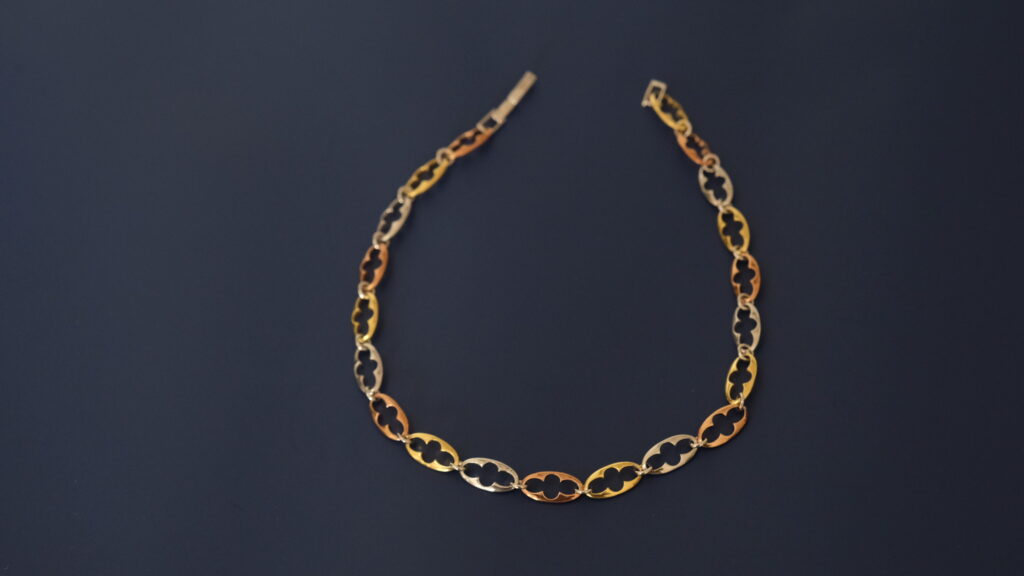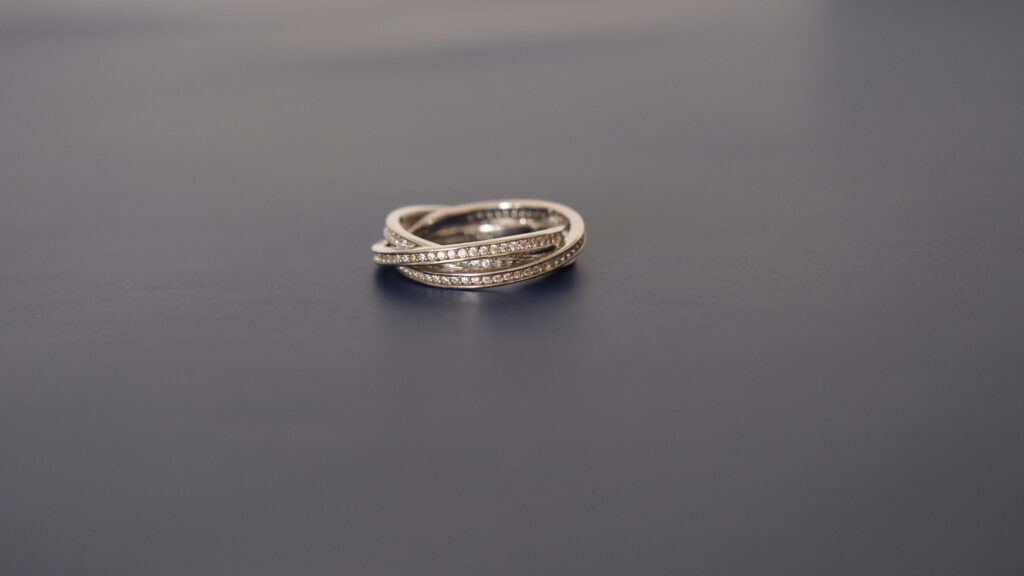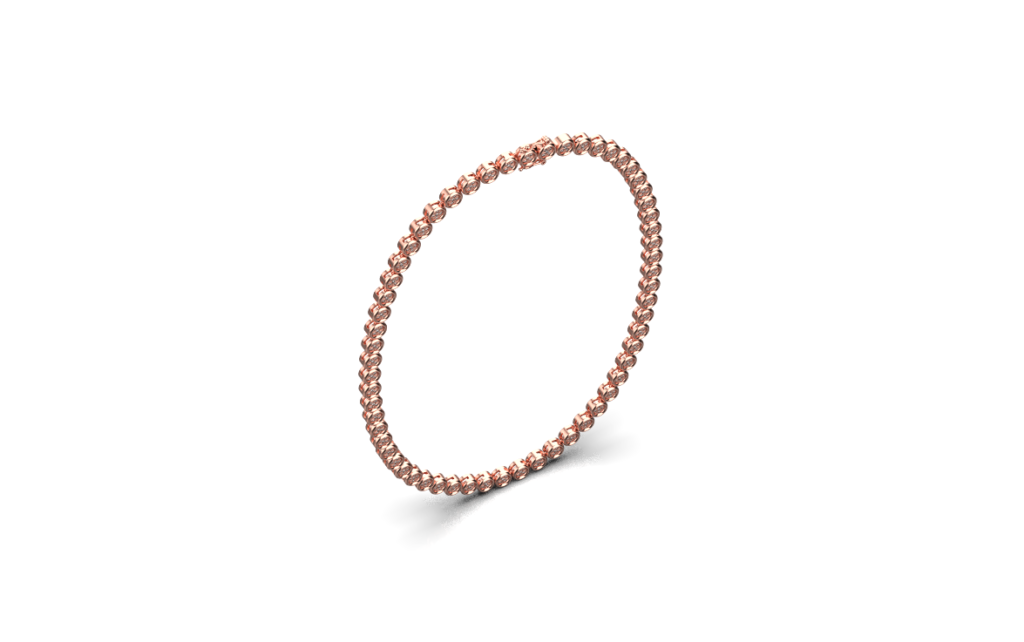Precious Metals
THE ART OF JEWELRY MAINTENANCE
A diamond cut is a key factor to consider when choosing your next piece of diamond jewelry.
By Chinwe, Chief Creative Officer
Jewelry is more than just adornment; it’s a reflection of personal style, cherished memories, and sometimes even investment. However, to maintain its luster and beauty over time, proper care is essential. In this comprehensive guide, we aim to provide you with tips on maintaining your jewelry, offering invaluable tips and insights to help you preserve your precious pieces for generations to come. Whether you’re a seasoned collector or a novice enthusiast, mastering the art of jewelry care will ensure that your treasures continue to shine brightly, standing the test of time.
Overview of Jewelry Types
Care for jewelry is usually dependent on the type of material used in its construction. To understand how to care for your jewelry, it’s important to understand the types of jewelry available. Here’s a detailed overview of the various types of jewelry and their characteristics:
Precious Metals:
- Gold:
Gold is a highly malleable metal, which means it can be easily shaped and molded into intricate designs. Its warm yellow hue is timeless and versatile, complementing a wide range of skin tones and styles. Gold jewelry is often alloyed with other metals to enhance its strength and durability, with popular alloys including white gold (alloyed with metals like palladium or nickel) and rose gold (alloyed with copper).
- Silver:
Silver is a bright, lustrous metal prized for its affordability and reflectivity. It has a cool, white color that pairs well with both casual and formal attire. Silver jewelry is often stamped with a hallmark indicating its purity, with sterling silver (92.5% pure silver) being the most common alloy used in jewelry making.
- Platinum:
Platinum is a dense, heavy metal with a cool, gray-white color that doesn’t fade or tarnish over time. It is highly resistant to corrosion and scratches, making it an excellent choice for everyday wear. Platinum’s purity is typically measured in parts per thousand, with platinum jewelry usually being 90-95% pure platinum.
Gemstones:
- Diamond
Diamonds are prized for their brilliance, fire, and hardness, making them one of the most sought-after gemstones in the world. They are formed deep within the Earth’s mantle under high pressure and temperature conditions, resulting in their unique crystalline structure. Diamonds come in a variety of colors, with white diamonds being the most common and valuable. Colored diamonds, such as fancy yellows, pinks, and blues, are rarer and often more valuable.
- Colored Gemstones:
Colored gemstones encompass a wide range of minerals, each with its own unique color, hardness, and optical properties. For example, rubies are a type of corundum with a rich red hue, while sapphires come in various colors, including blue, pink, yellow, and green. Emeralds are a type of beryl with a vivid green color, while opals exhibit a mesmerizing play-of-color caused by internal structures within the stone.
Costume Jewelry:
- Fashion Jewelry:
Fashion or costume jewelry encompasses a broad category of accessories made from non-precious materials such as base metals, plastic, glass, and synthetic gemstones. It often features bold designs and trendy styles, allowing wearers to experiment with different looks without breaking the bank.
- Plated Jewelry:
Plated jewelry consists of a thin layer of precious metal (such as gold or silver) applied over a base metal core. This layer of plating gives the jewelry its desired color and shine, mimicking the appearance of solid gold or silver at a fraction of the cost. Plated jewelry is a popular choice for fashion-forward individuals looking to accessorize on a budget.
General Maintenance Tips for Jewelry
Proper care and maintenance are essential for preserving the beauty and longevity of your jewelry collection. By implementing these simple practices, you can ensure that your pieces retain their shine and sparkle for a long time.
- Regular cleaning is key to keeping your jewelry looking its best. Use a mild soap or detergent diluted in warm water to gently clean your pieces. Avoid harsh chemicals and abrasives, as they can damage delicate gemstones and metals. For stubborn dirt and grime, use a soft-bristled brush, such as a toothbrush, to gently scrub the jewelry.
- After cleaning, thoroughly rinse your jewelry with clean water to remove any soap residue. Use a soft, lint-free cloth to pat dry the pieces, taking care to remove any moisture from crevices and settings. Allow the jewelry to air dry completely before storing it away.
- Proper storage is essential for preventing scratches, tarnish, and other damage. Store each piece of jewelry separately in a soft pouch or lined jewelry box to prevent tangling and scratching. For added protection, consider storing silver jewelry in anti-tarnish bags or with anti-tarnish strips to slow down tarnishing.
- Jewelry should be kept away from harsh chemicals, extreme temperatures, and direct sunlight, as these can cause damage and discoloration. Remove your jewelry before swimming, bathing, or engaging in activities that expose it to moisture or chemicals. Perfumes, lotions, and hairsprays can also contain chemicals that may damage certain gemstones and metals, so it’s best to apply these products before putting on your jewelry.
- Periodically inspect your jewelry for any signs of damage or wear, such as loose stones, bent prongs, or worn-out clasps. Address any issues promptly to prevent further damage and loss of stones. If you notice any damage beyond your ability to repair, seek the assistance of a professional jeweler for repair or restoration.
- Consider taking your jewelry to a professional jeweler for periodic maintenance, such as cleaning, polishing, and inspection, and more advanced repairs. Regular professional maintenance can help keep your jewelry in top condition and prolong its lifespan.
By following these general maintenance tips, you can ensure that your jewelry remains beautiful and well-preserved, bringing joy and elegance to every occasion.
Caring for Specific Types of Jewelry
While there are some general maintenance tips in caring for all types of jewelry, there are also specific methods based on the materials and characteristics of each type. Let’s delve into the unique care requirements for each type of jewelry:
- Gold Jewelry: Gold jewelry, being relatively durable and resistant to tarnish, requires regular cleaning to maintain its shine. However, due to its softness, gold can still be susceptible to scratches, especially in higher karats. Therefore, it’s essential to store gold jewelry separately from other pieces to prevent scratching. Additionally, avoid exposing gold jewelry to harsh chemicals, as they can damage the metal’s surface and alter its color.
- Silver Jewelry: Silver jewelry is prone to tarnishing due to exposure to air and moisture. To prevent tarnish, store silver jewelry in airtight containers or anti-tarnish bags when not in use. Additionally, consider using anti-tarnish strips or chalk in your storage area to absorb moisture and slow down tarnishing. When cleaning silver jewelry, use a silver polishing cloth or a specialized silver cleaner to remove tarnish gently.
Platinum Jewelry: Platinum jewelry is highly resistant to tarnish and corrosion, making it relatively low-maintenance compared to other metals. However, platinum can still develop a patina over time, giving it a dull appearance. To restore its shine, consider taking platinum jewelry to a professional jeweler for periodic polishing. Avoid exposing platinum jewelry to harsh chemicals or abrasive cleaners, as they can damage its surface. - Diamond Jewelry: Diamond jewelry requires regular cleaning to maintain its brilliance and sparkle. However, due to the hardness of diamonds, they are less susceptible to scratches and damage compared to other gemstones. When cleaning diamond jewelry, use a soft brush to remove dirt and debris from the settings, taking care not to scratch the metal. Additionally, have diamond jewelry professionally inspected to ensure that the settings are secure and the stones are in good condition.
- Colored Gemstone Jewelry: Colored gemstones come in a variety of compositions, each with its own unique care requirements. Some gemstones, such as opals and pearls, are softer and more susceptible to scratches and damage, requiring gentler cleaning methods. Others, like sapphires and rubies, are harder and more durable, allowing for more vigorous cleaning. Therefore, it’s essential to know the durability for your gemstone and adjust your cleaning methods accordingly.
- Fashion Jewelry: Fashion or costume jewelry is typically made from base metals and adorned with imitation/faux gemstones or crystals. While fashion jewelry may be more affordable than fine jewelry, it is also more prone to tarnishing, discoloration, and damage. Therefore, it’s essential to handle fashion jewelry with care and avoid exposing it to harsh chemicals, extreme temperatures, or prolonged sunlight. Wipe the jewelry with a soft, lint-free cloth after each wear to remove any dirt or oils, and avoid using abrasive cleaners or brushes that can scratch the surface of the stones. If deeper cleaning is needed, use a mild soap or detergent diluted in warm water and a soft brush to gently scrub the jewelry. Rinse thoroughly under warm water and pat dry with a clean cloth.
- Plated Jewelry: Plated jewelry, which consists of a thin layer of precious metal applied over a base metal core, can lose its plating over time with regular wear and exposure to moisture, chemicals, and friction. Hence, it is important to minimize friction and abrasion on plated jewelry by avoiding activities that may cause excessive rubbing or scratching, such as wearing plated rings while doing manual work or exercising. When storing plated jewelry, keep it separate from other pieces to prevent scratching and tangling. Also, consider applying a protective coating or sealant to plated jewelry to help extend its lifespan. Some jewelry sealants are available in spray or brush-on formulas and can provide an extra layer of protection against tarnish and wear.
-
Blüte Bracelet 0.48ct – Sterling Silver
Sterling Silver
£1,450 Select options This product has multiple variants. The options may be chosen on the product page -
Flat T Chain Necklace – 18K Gold/White Gold
18K Gold
£4,010 Select options This product has multiple variants. The options may be chosen on the product page -
Linear Gap Necklace – 18K Gold, White Gold
18K Yellow Gold, White Gold
£4,850 Select options This product has multiple variants. The options may be chosen on the product page -
Serendipity Cuff Earrings – 18K White Gold
18K White Gold
£1,350 Add to cart
Common Jewelry Problems
Common issues with jewelry can range from minor scratches and tarnishing to more significant problems like loose stones and damaged settings. Here are some common issues and how to address them:
1. Tarnishing: Tarnishing is a natural process that occurs when metals like silver and copper react with oxygen and sulfur in the air. To remove tarnish from jewelry, you can use a silver polishing cloth or a specialized silver cleaner. For more stubborn tarnish, you may need to use a polishing paste or cream and a soft brush to gently scrub the jewelry. Rinse thoroughly with warm water and pat dry with a clean cloth.
2. Scratches: Scratches are common on metal jewelry, especially softer metals like gold and silver. To minimize scratches, store your jewelry separately in soft pouches or lined jewelry boxes to prevent rubbing and friction. For minor scratches, you can use a polishing cloth or a gentle metal polish to buff out the scratches. For deeper scratches, you may need to take the jewelry to a professional jeweler for repair or polishing.
3. Loose Stones: Loose stones are a common issue with jewelry, especially rings and earrings that are worn frequently. If you notice a loose stone, avoid wearing the jewelry until it can be repaired to prevent further damage or loss of the stone. To fix a loose stone, take the jewelry to a professional jeweler who can tighten the setting or replace any missing stones.
4. Broken Chains or Clasps: Chains and clasps on necklaces and bracelets can become damaged or broken with regular wear. If a chain or clasp breaks, avoid wearing the jewelry until it can be repaired to prevent further damage or loss. Depending on the severity of the damage, a professional jeweler may be able to repair the chain or clasp or replace it with a new one.
5. Worn-out Prongs: Prongs are small metal claws that hold gemstones in place in settings. Over time, prongs can become worn or bent, increasing the risk of losing a stone. Regularly inspect your jewelry for signs of worn-out prongs, such as visible gaps or movement of the stone. If you notice any issues, take the jewelry to a professional jeweler for re-tipping or re-pronging to ensure the stones are secure.
6. Broken or Damaged Settings: Settings are the metal framework that holds gemstones in place in jewelry. If a setting becomes damaged or broken, it can compromise the security of the stones. Avoid wearing jewelry with damaged settings until it can be repaired to prevent further damage or loss of stones. A professional jeweler can repair or replace damaged settings to ensure the stones are secure.
Professional Maintenance and Repair
Professional maintenance and repair of jewelry encompass a range of specialized services offered by skilled jewelers to ensure that your precious pieces remain beautiful, functional, and well-preserved. From routine cleaning and polishing to intricate repairs and restoration work, professional jewelers play a crucial role in maintaining the beauty, integrity, and longevity of your jewelry collection.
One of the primary services offered by professional jewelers is cleaning and polishing. While regular cleaning at home can help remove dirt and oils from your jewelry, professional cleaning services provide a deeper and more thorough cleaning. Using specialized equipment and cleaning solutions, professional jewelers can safely and effectively remove tarnish, dirt, and grime from your jewelry, restoring its shine and sparkle without causing damage to delicate gemstones or metals.
In addition to cleaning and polishing, professional jewelers also offer repair services to address common issues with jewelry, such as loose stones, broken chains, damaged clasps, and worn-out prongs. Skilled jewelers can assess the extent of the damage and recommend the appropriate repairs needed to restore your jewelry to its original condition. Whether it’s tightening loose stones, soldering broken chains, replacing damaged clasps, or re-tipping worn-out prongs, professional jewelers have the expertise and tools to perform precise and meticulous repairs that ensure the structural integrity and longevity of your jewelry.
Furthermore, professional jewelers specialize in jewelry restoration, particularly for antique or heirloom pieces that require careful attention and expertise. Whether it’s repairing damaged settings, replacing missing stones, or re-plating worn-out metal, skilled jewellers can restore your jewellery to its former glory while preserving its unique history and character. Through meticulous craftsmanship and attention to detail, professional jewelers can breathe new life into cherished pieces, allowing them to be enjoyed for generations to come.
Customization is another valuable service offered by professional jewellers, allowing you to transform your jewellery into a one-of-a-kind masterpiece that reflects your personal style and preferences. Whether you’re redesigning an existing piece, incorporating sentimental elements, or creating a custom design from scratch, professional jewelers can work with you to bring your vision to life. From selecting the perfect gemstones to crafting intricate settings and details, skilled jewelers use their expertise and creativity to create custom pieces that are as unique as you are.
-
Ball Torque Bracelet – 18K Gold
18K Gold
£2,300 Select options This product has multiple variants. The options may be chosen on the product page -
Eagle Brooch – 18K White Gold
18K White Gold
£2,500 Add to cart -
Trilogy Baguette Eternity Band Ring – 18K Rose Gold – 0.74ct
18K Rose Gold
£2,100 Select options This product has multiple variants. The options may be chosen on the product page -
Trilogy Wedding Engagement Ring – 18K Rose Gold 0.59ct
18K Rose Gold
£2,500 Select options This product has multiple variants. The options may be chosen on the product page
As we conclude our exploration into the art of jewelry maintenance, we’ve embarked on a journey uncovering the intricacies of caring for our beloved pieces. Throughout our discussion, we’ve discovered that caring for jewelry extends far beyond simple cleaning routines. It’s about understanding the unique characteristics of each piece and tailoring our maintenance practices accordingly. Whether it’s the delicate care required for precious metals like gold and silver or the meticulous attention needed for gemstones and costume jewelry, each piece demands its own special treatment to ensure its longevity.
Furthermore, we’ve explored the importance of regular inspections and professional assistance in maintaining our jewelry’s beauty and integrity. Whether seeking repairs for loose stones or restoration for heirloom pieces, professional jewelers play a crucial role in safeguarding our most cherished possessions.
But beyond the technicalities of maintenance lies a deeper truth: our jewelry holds not just monetary value, but sentimental significance. Each piece tells a story, capturing moments of love, celebration, and remembrance. By caring for our jewelry with the same love and attention we lavish upon our memories, we ensure that these precious treasures remain eternally cherished.




